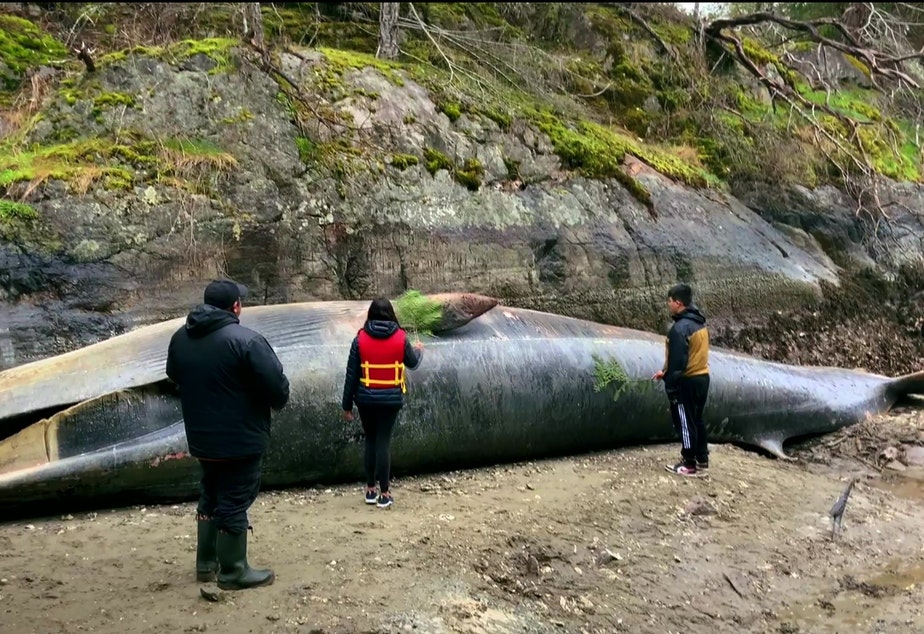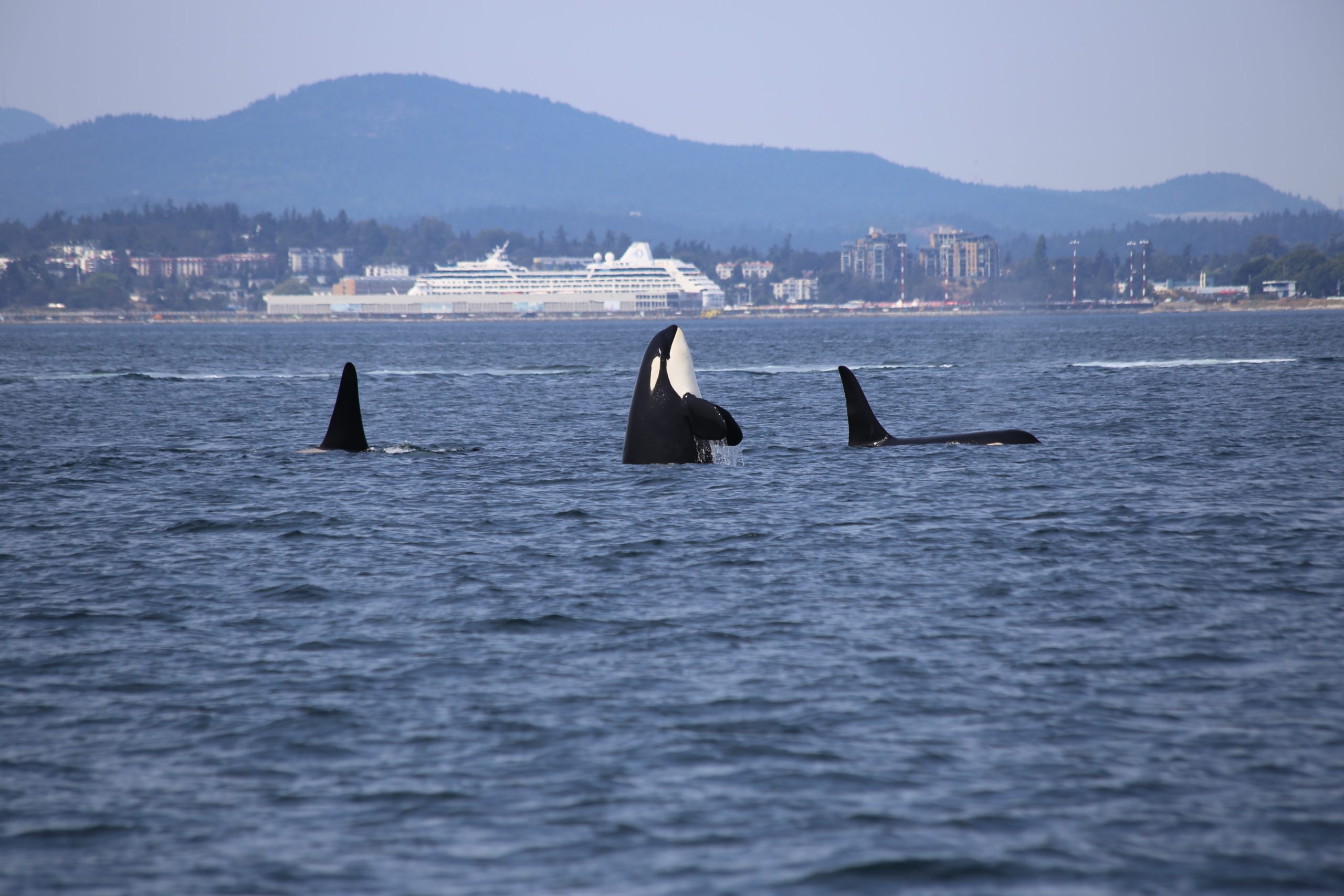Speed kills: How to make shipping less deadly for whales
A rare fin whale, last spotted alive off the coast of Seattle back in January, tragically washed ashore two months later in Pender Harbour, just north of Vancouver.
Less than two years old and about half the size of a fully grown fin whale — the second-largest species to ever exist, adults average 26 metres long and 80 tonnes — it had suffered blunt force trauma, an injury consistent with being hit by a ship.

Ship strikes — the likely cause of death for this member of a fin whale population considered threatened under Canada’s Species at Risk Act — are an all-too-common danger in the heavily-trafficked Pacific ocean. Exacerbated by ever bigger, faster and louder ships, this danger lies at the center of WWF’s recent study: “Shipping Traffic and Speed in Cetacean Habitats on Canada’s Pacific Coast.”
Canadians across the country increasingly rely on and benefit from commercial marine shipping. In fact, shipping has tripled in the past two decades, a trend expected to continue with the growth in e-commerce and trade corridors. But even today, more than 4,000 large vessels — along with 50 ferries and 300,000 recreational vessels — traverse the Canadian Pacific annually.
Breaking down the impact of fast ships on whales
Canada’s Pacific waters are also home to 11 seasonal and year-round whale populations of conservation concern, including the fin whale, blue whale, sei whale, North Pacific right whale, and Southern Resident killer whale.

Large, fast ships pose an especially high risk of collision with these large-bodied marine mammals as whales can be hard to spot from a distance. Even when operators can see the animal clearly, there’s likely not enough time for the whale or the ship to move out of the way. When struck by these vessels, whales are often killed and even if they survive, serious injury can affect their ability to swim, feed, and reproduce.
The large engines and rapidly rotating propellers of these fast-travelling ships also cause loud vibrations and noise underwater. As whales and dolphins depend on sound to sense their environment, find food, and communicate, this ship noise can impede these critical functions and cause undue stress.
Compounding existing issues like lack of food, pollution, and habitat degradation, the effects of vessel traffic and speed eventually result in population decline.
Prioritizing high-risk areas
To protect Southern Resident killer whale from ship strikes and noise pollution, a program led by the Port of Vancouver has implemented a number of voluntary vessel slowdown zones. In the last two years, between 80 to 90 per cent of ship operators have opted to reduce speed to between 11 and 15 knots. This has reduced noise intensity within killer whale critical habitat reducing echolocation masking and improving feeding opportunities for endangered whales.
The high rate of participation in this voluntary initiative shows that slowdowns are a reasonable ask and feasible to implement. Yet, there are still little-to-no measures to manage ship traffic along much of Canada’s remaining Pacific coast, especially in northern BC.

In these unmanaged regions, knowing specific areas where ship traffic and whale habitats overlap can help governments, ports, and communities prioritize and implement steps to reduce impacts on species at risk as well as support recovering ones.
Our discussion paper does just that by overlapping ship tracking data, which allows us to understand activity and speed across different vessel types, with areas known to be used by at-risk whales.
Humpback and Northern Resident killer whales, for example, frequent areas around the Dixon Entrance to the Port of Prince Rupert, where there’s heavy traffic from large bulk carriers and container ships. And fin, humpback, and transient killer whales use the region around the central coast, inside passage and entrance to the Port of Kitimat during the summer months, when fast cruises and ferries are also plentiful. Vessel traffic in both these areas is set to grow in the coming years, increasing the threat to recovering whales.
What’s next?
The good news is that this study tells us which areas and ship types need our attention first — and we already know what works to reduce strikes and noise in whale habitat.
Governments and ports can adopt measures such as moving ship traffic away from critical habitats, enforcing permanent or seasonal speed restrictions (of less than 10 knots) and encouraging more efficient ship design with cleaner fuels and quieter engines.
These enforcements, even if starting at major Pacific ports within their 12-nautical-mile jurisdiction can go a long way in making the west coast’s shipping-heavy waters safer for whales like the fin that died in March.
And the sad reality is that while this individual was found, many more have died without us knowing. The threat from increasing, fast-moving ship traffic simply cannot be ignored any longer. Canadian ports and governments must protect these gentle giants from ships that use their waters before it’s too late.

